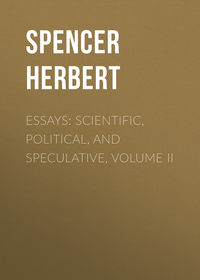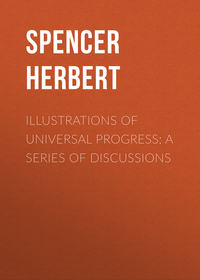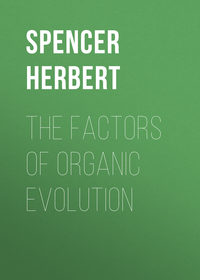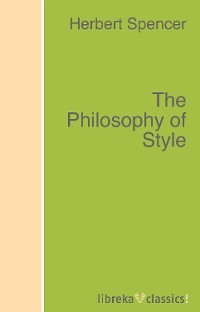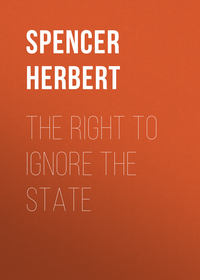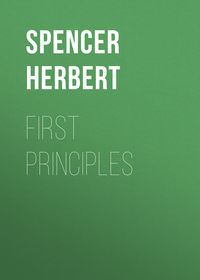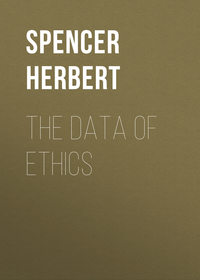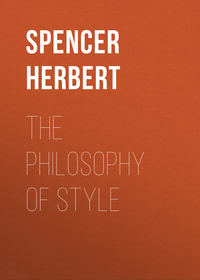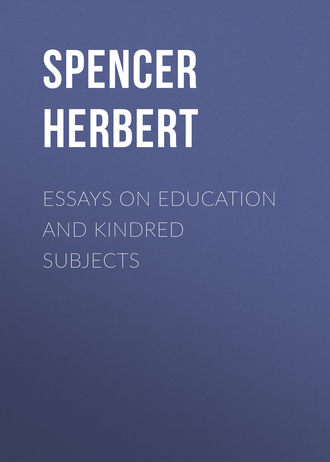 полная версия
полная версияEssays on Education and Kindred Subjects
Object-lessons should not only be carried on after quite a different fashion from that commonly pursued, but should be extended to a range of things far wider, and continued to a period far later, than now. They should not be limited to the contents of the house; but should include those of the fields and the hedges, the quarry and the sea-shore. They should not cease with early childhood; but should be so kept up during youth, as insensibly to merge into the investigations of the naturalist and the man of science. Here again we have but to follow Nature's leadings. Where can be seen an intenser delight than that of children picking up new flowers and watching new insects; or hoarding pebbles and shells? And who is there but perceives that by sympathising with them they may be led on to any extent of inquiry into the qualities and structures of these things? Every botanist who has had children with him in the woods and lanes must have noticed how eagerly they joined in his pursuits, how keenly they searched out plants for him, how intently they watched while he examined them, how they overwhelmed him with questions. The consistent follower of Bacon – the "servant and interpreter of nature," will see that we ought modestly to adopt the course of culture thus indicated. Having become familiar with the simpler properties of inorganic objects, the child should by the same process be led on to an exhaustive examination of the things it picks up in its daily walks – the less complex facts they present being alone noticed at first: in plants, the colours, numbers, and forms of the petals, and shapes of the stalks and leaves; in insects, the numbers of the wings, legs, and antennæ, and their colours. As these become fully appreciated and invariably observed, further facts may be successively introduced: in the one case, the numbers of stamens and pistils, the forms of the flowers, whether radial or bilateral in symmetry, the arrangement and character of the leaves, whether opposite or alternate, stalked or sessile, smooth or hairy, serrated, toothed, or crenate; in the other, the divisions of the body, the segments of the abdomen, the markings of the wings, the number of joints in the legs, and the forms of the smaller organs – the system pursued throughout being that of making it the child's ambition to say respecting everything it finds all that can be said. Then when a fit age has been reached, the means of preserving these plants, which have become so interesting in virtue of the knowledge obtained of them, may as a great favour be supplied; and eventually, as a still greater favour, may also be supplied the apparatus needful for keeping the larvæ of our common butterflies and moths through their transformations – a practice which, as we can personally testify, yields the highest gratification; is continued with ardour for years; when joined with the formation of an entomological collection, adds immense interest to Saturday-afternoon rambles; and forms an admirable introduction to the study of physiology.
We are quite prepared to hear from many that all this is throwing away time and energy; and that children would be much better occupied in writing their copies or learning their pence-tables, and so fitting themselves for the business of life. We regret that such crude ideas of what constitutes education, and such a narrow conception of utility, should still be prevalent. Saying nothing on the need for a systematic culture of the perceptions and the value of the practices above inculcated as subserving that need, we are prepared to defend them even on the score of the knowledge gained. If men are to be mere cits, mere porers over ledgers, with no ideas beyond their trades – if it is well that they should be as the cockney whose conception of rural pleasures extends no further than sitting in a tea-garden smoking pipes and drinking porter; or as the squire who thinks of woods as places for shooting in, of uncultivated plants as nothing but weeds, and who classifies animals into game, vermin, and stock – then indeed it is needless to learn anything that does not directly help to replenish the till and fill the larder. But if there is a more worthy aim for us than to be drudges – if there are other uses in the things around than their power to bring money – if there are higher faculties to be exercised than acquisitive and sensual ones – if the pleasures which poetry and art and science and philosophy can bring are of any moment; then is it desirable that the instinctive inclination which every child shows to observe natural beauties and investigate natural phenomena, should be encouraged. But this gross utilitarianism which is content to come into the world and quit it again without knowing what kind of a world it is or what it contains, may be met on its own ground. It will by and by be found that a knowledge of the laws of life is more important than any other knowledge whatever – that the laws of life underlie not only all bodily and mental processes, but by implication all the transactions of the house and the street, all commerce, all politics, all morals – and that therefore without a comprehension of them, neither personal nor social conduct can be rightly regulated. It will eventually be seen too, that the laws of life are essentially the same throughout the whole organic creation; and further, that they cannot be properly understood in their complex manifestations until they have been studied in their simpler ones. And when this is seen, it will be also seen that in aiding the child to acquire the out-of-door information for which it shows so great an avidity, and in encouraging the acquisition of such information throughout youth, we are simply inducing it to store up the raw material for future organisation – the facts that will one day bring home to it with due force, those great generalisations of science by which actions may be rightly guided.
The spreading recognition of drawing as an element of education is one among many signs of the more rational views on mental culture now beginning to prevail. Once more it may be remarked that teachers are at length adopting the course which Nature has perpetually been pressing on their notice. The spontaneous attempts made by children to represent the men, houses, trees, and animals around them – on a slate if they can get nothing better, or with lead-pencil on paper if they can beg them – are familiar to all. To be shown through a picture-book is one of their highest gratifications; and as usual, their strong imitative tendency presently generates in them the ambition to make pictures themselves also. This effort to depict the striking things they see is a further instinctive exercise of the perceptions – a means whereby still greater accuracy and completeness of observation are induced. And alike by trying to interest us in their discoveries of the sensible properties of things, and by their endeavours to draw, they solicit from us just that kind of culture which they most need.
Had teachers been guided by Nature's hints, not only in making drawing a part of education but in choosing modes of teaching it, they would have done still better than they have done. What is that the child first tries to represent? Things that are large, things that are attractive in colour, things round which its pleasurable associations most cluster – human beings from whom it has received so many emotions; cows and dogs which interest by the many phenomena they present; houses that are hourly visible and strike by their size and contrast of parts. And which of the processes of representation gives it most delight? Colouring. Paper and pencil are good in default of something better; but a box of paints and a brush – these are the treasures. The drawing of outlines immediately becomes secondary to colouring – is gone through mainly with a view to the colouring; and if leave can be got to colour a book of prints, how great is the favour! Now, ridiculous as such a position will seem to drawing-masters who postpone colouring and who teach form by a dreary discipline of copying lines, we believe that the course of culture thus indicated is the right one. The priority of colour to form, which, as already pointed out, has a psychological basis, should be recognised from the beginning; and from the beginning also, the things imitated should be real. That greater delight in colour which is not only conspicuous in children but persists in most persons throughout life, should be continuously employed as the natural stimulus to the mastery of the comparatively difficult and unattractive form: the pleasure of the subsequent tinting should be the prospective reward for the labour of delineation. And these efforts to represent interesting actualities should be encouraged; in the conviction that as, by a widening experience, simpler and more practicable objects become interesting, they too will be attempted; and that so a gradual approximation will be made towards imitations having some resemblance to the realities. The extreme indefiniteness which, in conformity with the law of evolution, these first attempts exhibit, is anything but a reason for ignoring them. No matter how grotesque the shapes produced; no matter how daubed and glaring the colours. The question is not whether the child is producing good drawings. The question is, whether it is developing its faculties. It has first to gain some command over its fingers, some crude notions of likeness; and this practice is better than any other for these ends, since it is the spontaneous and interesting one. During early childhood no formal drawing-lessons are possible. Shall we therefore repress, or neglect to aid, these efforts at self-culture? or shall we encourage and guide them as normal exercises of the perceptions and the powers of manipulation? If by furnishing cheap woodcuts to be painted, and simple contour-maps to have their boundary lines tinted, we can not only pleasurably draw out the faculty of colour, but can incidentally produce some familiarity with the outlines of things and countries, and some ability to move the brush steadily; and if by the supply of tempting objects we can keep up the instinctive practice of making representations, however rough; it must happen that when the age for lessons in drawing is reached, there will exist a facility that would else have been absent. Time will have been gained; and trouble, both to teacher and pupil, saved.
From what has been said, it may be readily inferred that we condemn the practice of drawing from copies; and still more so that formal discipline in making straight lines and curved lines and compound lines, with which it is the fashion of some teachers to begin. We regret that the Society of Arts has recently, in its series of manuals on "Rudimentary Art Instruction," given its countenance to an elementary drawing-book, which is the most vicious in principle that we have seen. We refer to the Outline from Outline, or from the Flat, by John Bell, sculptor. As explained in the prefatory note, this publication proposes "to place before the student a simple, yet logical mode of instruction;" and to this end sets out with a number of definitions thus: —
"A simple line in drawing is a thin mark drawn from one point to another.
"Lines may be divided, as to their nature in drawing, into two classes: —
"1. Straight, which are marks that go the shortest road between two points, as A B.
"2. Or Curved, which are marks which do not go the shortest road between two points, as C D."
And so the introduction progresses to horizontal lines, perpendicular lines, oblique lines, angles of the several kinds, and the various figures which lines and angles make up. The work is, in short, a grammar of form, with exercises. And thus the system of commencing with a dry analysis of elements, which, in the teaching of language, has been exploded, is to be re-instituted in the teaching of drawing. We are to set out with the definite, instead of with the indefinite. The abstract is to be preliminary to the concrete. Scientific conceptions are to precede empirical experiences. That this is an inversion of the normal order, we need scarcely repeat. It has been well said concerning the custom of prefacing the art of speaking any tongue by a drilling in the parts of speech and their functions, that it is about as reasonable as prefacing the art of walking by a course of lessons on the bones, muscles, and nerves of the legs; and much the same thing may be said of the proposal to preface the art of representing objects, by a nomenclature and definitions of the lines which they yield on analysis. These technicalities are alike repulsive and needless. They render the study distasteful at the very outset; and all with the view of teaching that which, in the course of practice, will be learnt unconsciously. Just as the child incidentally gathers the meanings of ordinary words from the conversations going on around it, without the help of dictionaries; so, from the remarks on objects, pictures, and its own drawings, will it presently acquire, not only without effort but even pleasurably, those same scientific terms which, when taught at first, are a mystery and a weariness.
If any dependence is to be placed on the general principles of education that have been laid down, the process of learning to draw should be throughout continuous with those efforts of early childhood, described above as so worthy of encouragement. By the time that the voluntary practice thus initiated has given some steadiness of hand, and some tolerable ideas of proportion, there will have arisen a vague notion of body as presenting its three dimensions in perspective. And when, after sundry abortive, Chinese-like attempts to render this appearance on paper, there has grown up a pretty clear perception of the thing to be done, and a desire to do it, a first lesson in empirical perspective may be given by means of the apparatus occasionally used in explaining perspective as a science. This sounds alarming; but the experiment is both comprehensible and interesting to any boy or girl of ordinary intelligence. A plate of glass so framed as to stand vertically on the table, being placed before the pupil, and a book or like simple object laid on the other side of it, he is requested, while keeping the eye in one position, to make ink-dots on the glass so that they may coincide with, or hide, the corners of this object. He is next told to join these dots by lines; on doing which he perceives that the lines he makes hide, or coincide with, the outlines of the object. And then by putting a sheet of paper on the other side of the glass, it is made manifest to him that the lines he has thus drawn represent the object as he saw it. They not only look like it, but he perceives that they must be like it, because he made them agree with its outlines; and by removing the paper he can convince himself that they do agree with its outlines. The fact is new and striking; and serves him as an experimental demonstration, that lines of certain lengths, placed in certain directions on a plane, can represent lines of other lengths, and having other directions, in space. By gradually changing the position of the object, he may be led to observe how some lines shorten and disappear, while others come into sight and lengthen. The convergence of parallel lines, and, indeed, all the leading facts of perspective, may, from time to time, be similarly illustrated to him. If he has been duly accustomed to self-help, he will gladly, when it is suggested, attempt to draw one of these outlines on paper, by the eye only; and it may soon be made an exciting aim to produce, unassisted, a representation as like as he can to one subsequently sketched on the glass. Thus, without the unintelligent, mechanical practice of copying other drawings, but by a method at once simple and attractive – rational, yet not abstract – a familiarity with the linear appearances of things, and a faculty of rendering them, may be step by step acquired. To which advantages add these: – that even thus early the pupil learns, almost unconsciously, the true theory of a picture (namely, that it is a delineation of objects as they appear when projected on a plane placed between them and the eye); and that when he reaches a fit age for commencing scientific perspective, he is already thoroughly acquainted with the facts which form its logical basis.
As exhibiting a rational mode of conveying primary conceptions in geometry, we cannot do better than quote the following passage from Mr. Wyse: —
"A child has been in the habit of using cubes for arithmetic; let him use them also for the elements of geometry. I would begin with solids, the reverse of the usual plan. It saves all the difficulty of absurd definitions, and bad explanations on points, lines, and surfaces, which are nothing but abstractions… A cube presents many of the principal elements of geometry; it at once exhibits points, straight lines, parallel lines, angles, parallelograms, etc., etc. These cubes are divisible into various parts. The pupil has already been familiarised with such divisions in numeration, and he now proceeds to a comparison of their several parts, and of the relation of these parts to each other… From thence he advances to globes, which furnish him with elementary notions of the circle, of curves generally, etc., etc.
"Being tolerably familiar with solids, he may now substitute planes. The transition may be made very easy. Let the cube, for instance, be cut into thin divisions, and placed on paper; he will then see as many plane rectangles as he has divisions; so with all the others. Globes may be treated in the same manner; he will thus see how surfaces really are generated, and be enabled to abstract them with facility in every solid.
"He has thus acquired the alphabet and reading of geometry. He now proceeds to write it.
"The simplest operation, and therefore the first, is merely to place these planes on a piece of paper, and pass the pencil round them. When this has been frequently done, the plane may be put at a little distance, and the child required to copy it, and so on."
A stock of geometrical conceptions having been obtained, in some such manner as this recommended by Mr. Wyse, a further step may be taken, by introducing the practice of testing the correctness of figures drawn by eye: thus both exciting an ambition to make them exact, and continually illustrating the difficulty of fulfilling that ambition. There can be little doubt that geometry had its origin (as, indeed, the word implies) in the methods discovered by artizans and others, of making accurate measurements for the foundations of buildings, areas of inclosures, and the like; and that its truths came to be treasured up, merely with a view to their immediate utility. They would be introduced to the pupil under analogous relationships. In cutting out pieces for his card-houses, in drawing ornamental diagrams for colouring, and in those various instructive occupations which an inventive teacher will lead him into, he may for a length of time be advantageously left, like the primitive builder, to tentative processes; and so will learn through experience the difficulty of achieving his aims by the unaided senses. When, having meanwhile undergone a valuable discipline of the perceptions, he has reached a fit age for using a pair of compasses, he will, while duly appreciating these as enabling him to verify his ocular guesses, be still hindered by the imperfections of the approximative method. In this stage he may be left for a further period: partly as being yet too young for anything higher; partly because it is desirable that he should be made to feel still more strongly the want of systematic contrivances. If the acquisition of knowledge is to be made continuously interesting; and if, in the early civilisation of the child, as in the early civilisation of the race, science is valued only as ministering to art; it is manifest that the proper preliminary to geometry, is a long practice in those constructive processes which geometry will facilitate. Observe that here, too, Nature points the way. Children show a strong propensity to cut out things in paper, to make, to build – a propensity which, if encouraged and directed, will not only prepare the way for scientific conceptions, but will develop those powers of manipulation in which most people are so deficient.
When the observing and inventive faculties have attained the requisite power, the pupil may be introduced to empirical geometry; that is – geometry dealing with methodical solutions, but not with the demonstrations of them. Like all other transitions in education, this should be made not formally but incidentally; and the relationship to constructive art should still be maintained. To make, out of cardboard, a tetrahedron like one given to him, is a problem which will interest the pupil and serve as a convenient starting-point. In attempting this, he finds it needful to draw four equilateral triangles arranged in special positions. Being unable in the absence of an exact method to do this accurately, he discovers on putting the triangles into their respective positions, that he cannot make their sides fit; and that their angles do not meet at the apex. He may now be shown how, by describing a couple of circles, each of these triangles may be drawn with perfect correctness and without guessing; and after his failure he will value the information. Having thus helped him to the solution of his first problem, with the view of illustrating the nature of geometrical methods, he is in future to be left to solve the questions put to him as best he can. To bisect a line, to erect a perpendicular, to describe a square, to bisect an angle, to draw a line parallel to a given line, to describe a hexagon, are problems which a little patience will enable him to find out. And from these he may be led on step by step to more complex questions: all of which, under judicious management, he will puzzle through unhelped. Doubtless, many of those brought up under the old regime, will look upon this assertion sceptically. We speak from facts, however; and those neither few nor special. We have seen a class of boys become so interested in making out solutions to such problems, as to look forward to their geometry-lesson as a chief event of the week. Within the last month, we have heard of one girl's school, in which some of the young ladies voluntarily occupy themselves with geometrical questions out of school-hours; and of another, where they not only do this, but where one of them is begging for problems to find out during the holidays: both which facts we state on the authority of the teacher. Strong proofs, these, of the practicability and the immense advantage of self-development! A branch of knowledge which, as commonly taught, is dry and even repulsive, is thus, by following the method of Nature, made extremely interesting and profoundly beneficial. We say profoundly beneficial, because the effects are not confined to the gaining of geometrical facts, but often revolutionise the whole state of mind. It has repeatedly occurred that those who have been stupefied by the ordinary school-drill – by its abstract formulas, its wearisome tasks, its cramming – have suddenly had their intellects roused by thus ceasing to make them passive recipients, and inducing them to become active discoverers. The discouragement caused by bad teaching having been diminished by a little sympathy, and sufficient perseverance excited to achieve a first success, there arises a revulsion of feeling affecting the whole nature. They no longer find themselves incompetent; they, too, can do something. And gradually as success follows success, the incubus of despair disappears, and they attack the difficulties of their other studies with a courage insuring conquest.
A few weeks after the foregoing remarks were originally published, Professor Tyndall in a lecture at the Royal Institution "On the Importance of the Study of Physics as a Branch of Education," gave some conclusive evidence to the same effect. His testimony, based on personal observation, is of such great value that we cannot refrain from quoting it. Here it is.
"One of the duties which fell to my share, during the period to which I have referred, was the instruction of a class in mathematics, and I usually found that Euclid and the ancient geometry generally, when addressed to the understanding, formed a very attractive study for youth. But it was my habitual practice to withdraw the boys from the routine of the book, and to appeal to their self-power in the treatment of questions not comprehended in that routine. At first, the change from the beaten track usually excited a little aversion: the youth felt like a child amid strangers; but in no single instance have I found this aversion to continue. When utterly disheartened, I have encouraged the boy by that anecdote of Newton, where he attributes the difference between him and other men, mainly to his own patience; or of Mirabeau, when he ordered his servant, who had stated something to be impossible, never to use that stupid word again. Thus cheered, he has returned to his task with a smile, which perhaps had something of doubt in it, but which, nevertheless, evinced a resolution to try again. I have seen the boy's eye brighten, and at length, with a pleasure of which the ecstasy of Archimedes was but a simple expansion, heard him exclaim, 'I have it, sir.' The consciousness of self-power, thus awakened, was of immense value; and animated by it, the progress of the class was truly astonishing. It was often my custom to give the boys their choice of pursuing their propositions in the book, or of trying their strength at others not to be found there. Never in a single instance have I known the book to be chosen. I was ever ready to assist when I deemed help needful, but my offers of assistance were habitually declined. The boys had tasted the sweets of intellectual conquest and demanded victories of their own. I have seen their diagrams scratched on the walls, cut into the beams upon the play ground, and numberless other illustrations of the living interest they took in the subject. For my own part, as far as experience in teaching goes, I was a mere fledgling: I knew nothing of the rules of pedagogics, as the Germans name it; but I adhered to the spirit indicated at the commencement of this discourse, and endeavoured to make geometry a means and not a branch of education. The experiment was successful, and some of the most delightful hours of my existence have been spent in marking the vigorous and cheerful expansion of mental power, when appealed to in the manner I have described."


